
This school dropout turned taxi driver turned billionaire owns a support vessel so massive it surpasses many superyachts. The 262-footer is in a league of its own, boasting a basketball court, helipad, an arsenal of tenders and toys, and much more.

Kiwi businessman Graeme Hart just loves superyachts –
With a wealth of $10 billion , Hart, a school dropout, made quite a living with his packaging business. The 69-year-old went from towing trucks to becoming one of New Zealand’s richest businessmen. His entrepreneurial journey began in the 1980s with a party rental business, which yielded about $7 million, prepping him for his next move—one that involved pursuing 90 businesses before zeroing in on New Zealand’s Government Printing Office for $23 million. Hart’s Rank Holding Group makes everyday products like milk cartons, water bottles, paper, and aluminum foil. He also owns Hefty garbage bags, among many other valuable assets.

You may also like
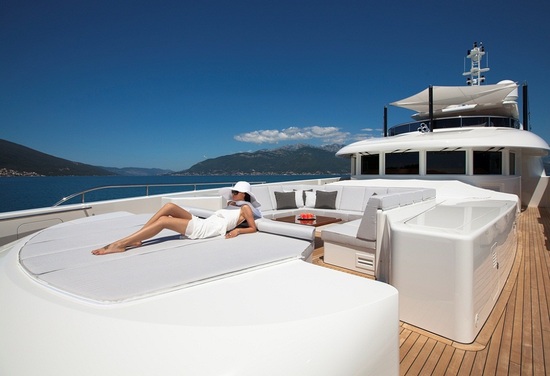
Lady Petra superyacht is displayed at the 2012 Monaco Yacht Show
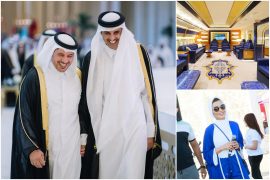
Worth more than Elon Musk and Jeff Bezos combined, the Qatari royal family leads a life so decadent that even kings and billionaires can only dream of – Their $400 million yacht is longer than a football field, they stay in mega palaces, and their private jet is a Boeing 747.
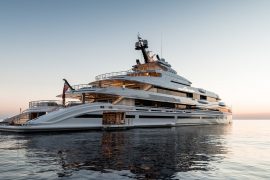
A member of the Abu Dhabi royal family has bought the $200 million megayacht Lana – So luxurious is the vessel that Bill Gates once threw a party on it while Beyonce & Jay Z rented it for a vacation. At 317 feet the floating palace is longer than a football pitch.
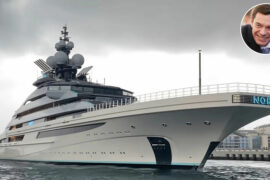
Russia’s richest man, Alexei Mordashov, has secretly moved his gigantic 465-foot megayacht, Nord, to Abu Dhabi. Will this $500 million ‘Houdini of the high seas’ now make the UAE its new home?
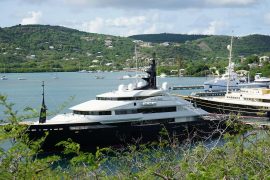
Inspite of legal challenges, former Google CEO Eric Schmidt is painting a picture of patience for the purchase of the Alfa Nero superyacht.
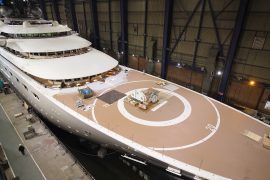
2 years in the making – How Lürssen built this $600 million megayacht? A rare behind-the-scenes look at how one of the world’s largest private vessels was constructed for an Emirati royal.
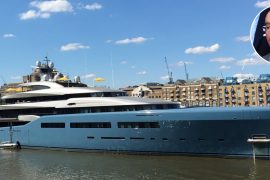
Take a look at Joe Lewis’s stunning $250 million superyacht, Aviva, which the Tottenham owner used to bail himself out of trouble. The billionaire loved padel tennis so much that he actually built this 279 feet long vessel around a padel tennis court.
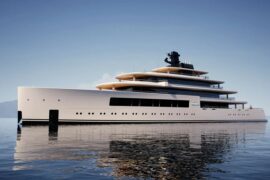
The shipyard that built Jeff Bezos’ yacht has unveiled ‘Clarity,’ a 262-foot-long, energy-efficient superyacht covered in solar panels. As elegant as it is, it is equally luxurious, featuring a swimming pool and a large winter garden.
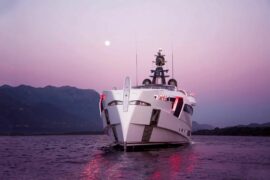
A secretive 28-year-old European millionaire commissioned this stunning superyacht and designed it to resemble Iron Man. The 161-foot-long vessel has a large beach club, a 120-inch interactive LED screen to play video games, and a password-protected wine room.
Skip to main content
Do you need our support?
0800 260 6780
- Support us >
- Our national campaigns >
- Falklands 40 >

Falklands 40: David Hart Dyke
Captain David Hart Dyke commanded the destroyer HMS Coventry in the Falklands campaign, surviving the Argentinian air attack that would sink his ship.
Captain David Hart Dyke CBE, LVO, ADC is married to Diana Hart Dyke and was Captain of HMS Coventry during the Falkland’s Conflict. On the 25 May 1982 the ship was sunk in the South Atlantic: it took hours for the full picture to emerge and Diana didn’t find out until over 24 hours later that, although he had suffered burns, David had survived and was safe.
“I was the son of a Naval officer, so I suppose it was always tucked away in my mind that I would want to join the Navy. I was never pushed at all. I joined at 18, actually rather later than I should have done because I was dithering with a place at Oxford University and the Navy didn’t want graduates at that point. So, I was a late applicant. I was the last of the National Servicemen and was commissioned as a Midshipman. I joined a destroyer in the Mediterranean fleet and was then selected for a commission as a career Naval officer.”
… we were in effect diplomats and I enjoyed seeing the Royal Navy influencing events and forging close relationships with our allies…
“I did a technical course at Greenwich and then went to Dartmouth. Although I was a late entry, I was able to move up the ladder reasonably swiftly and had a very interesting career for 30 years.
“From Dartmouth, I served in a number of ships and eventually specialised as a navigating officer. I served all around the world, mostly Middle East and Far East seeing the Royal Navy representing the UK abroad, supporting our fellow democracies and promoting trade and stability in the important regions of the world. Close relations with our allies in Europe and America were particularly important too.
“I had two teaching jobs ashore, at Dartmouth and at our Naval staff college in Greenwich. Following these I was appointed Commander of the Royal Yacht and then became the Captain of HMS Coventry. A guided missile destroyer, which was involved in the Falklands War, much to our surprise."
…we were told to sail with speed and ‘head south’…
“We were exercising in the Mediterranean and the Eastern Atlantic. Coventry was part of Admiral Woodward’s flotilla of eight ships, frigates and destroyers. We were exercising together which included firing our weapons. When we got to Gibraltar when we heard things were happening back home. The Commander in Chief, who was with us, had to fly home at short notice so we knew something was up, but had no idea exactly what.
“Eventually we were told to sail south at speed, but with no indication of why or where to go. We hastily replenished stores from other ships heading for the UK and also sailors to replace ours who had strong reasons to get back home. Then we sped southwards at considerable speed. Eventually we were told to head towards the Falklands and later made aware of the imminent invasion of the Falkland Islands by the Argentinians."
Preparing a ship for war is hard when the sailors suddenly realise the situation is going to be dangerous.
“It was quite traumatic when we knew where we were going to continue on south from Ascension. Preparing a ship for war focuses on the dangers ahead. Anxious letters from home, increased our concerns as well. It was a very unsettling time.
“When we knew we were actually going to start fighting we faced it bravely. And moral rose to a high point. Of course, it required strong leadership, discipline and good training to be confident in what we would be facing. I knew the captains of the other ships so I knew we would all work well together. It was remarkable how we coped with the dangers and performed
The Flagship HMS Hermes, with the carrier battle group eventually joined us, Coventry having been down there well before them, and soon after the war began in earnest, and we rose to the challenges remarkably well."
…we were there closest to the enemy air force, who were coming over in considerable number.
“The three anti-aircraft ships, HMS Coventry, HMS Glasgow and HMS Sheffield with their long-range guided missile were key at this time in trying to reduce the enemy air threat and to protect the troops who would have to land ashore and fight the land battle. The troops and amphibious forces were particularly vulnerable while unloading from the landing ships and consolidating ashore.
“We had to reduce that air threat, which was going full out to destroy the landing forces. We were leading a very dangerous life and unfortunately Sheffield was sunk very early on and Glasgow was damaged by a bomb and had to withdraw so it was left just Coventry to do a lot of the dangerous front-line work.
"I had a good rapport with the Admiral on the communication network who had to make many hard decisions when dispatching ships to such dangerous waters. I wasn’t enjoying where he was sending Coventry close to shore to be in a position to keep in touch with the amphibious ships and cover the troops going ashore from air attack."
... a Royal marine remarked, 'Thank God for Coventry. If it wasn’t for her, it would’ve been us'.
“We were tied to a particular area of water close to the enemy air force when flying over the islands in considerable numbers. We were trying to take out the attacking aircraft, succeeding with two or three as well as destroying a troop-carrying helicopter. Morale was high at this point and the ship’s company was at its best, nevertheless it was a hard four weeks fighting.
“In the end the enemy was determined to get rid of us and we knew they would be going for us. We had the intelligence gathering equipment on board enabling us to listen to the enemy. We knew exactly what they were doing, how many fighters were taking off and who they were going for. We detected the enemy flying straight for us, clearly determined to destroy us since we were being difficult. There was some consolation after we sunk when a Royal marine remarked, ‘Thank God for Coventry. If it wasn’t for her, it would’ve been us’. And that was the whole point of our mission – to be the sacrifice if necessary rather than the troops ashore in order to win the war.
“As Sandy Woodward described later, he had to send me back to the ‘most lethal spot in the Atlantic’. It was as lethal as it was conspicuous to the enemy. I had HMS Broadsword with me, a frigate with a close-range anti-aircraft missile system, to help protect me. the agreement between us was to manoeuvre quite closely together with HMS Broadsword being towards the direction of threat to destroy the aircraft heading for me, but hopefully I would get them first with my longer-range missiles. It was a very difficult combination between us to manoeuvre so as to get in the right firming positions when the attackers flew so fast and low from several different directions. In air warfare everything happens in seconds.
“We were fighting without the best weapons for the difficult situation we were in, but we resigned to be doing it as best we could. In the end they came for me, three or four aeorplanes all at once, from different directions. We fired our missiles and missed because the enemy was flying at wave-top height. They knew exactly what our ships’ weapons were capable of and that we couldn’t hit any low-flying missiles and aircraft flying so low and coming straight at us.
"We manoeuvred speedily trying to get missiles and guns firming, as did HMS Broadsword., but in the end she had a missile misfunction and wasn’t able to engage the first aircraft coming to me and when she eventually got contact with another she hadn’t been able to get in a firing position clear of HMS Coventry and missed an opportunity to fire her missiles. In the action we were hit and so was HMS Broadsword, though not damaged too badly."
…meanwhile, water’s rushing in.
“It was a desperate situation, we were just ‘out gunned’ since we didn’t have the weapons. I shot down two or three aircraft earlier that day but in the end they came at me very determinedly and launched three bombs at me, British 1,000-pound bombs. They all went into the side of the ship, one didn’t explode, two did. The bombs went through the superstructure and two blew up deep down inside the ship. One side was blown out with a large gap in it. The operations room was filled with smoke and fire and most of the command team, about 30 of us in there, were taken out.”
“I remained conscious, and aware of the situation. But there’s no way we could continue. Equipment was destroyed, fire, think smoke filled the operations room in the aft end of the ship, thick smoke and fire also spread throughout where the damage control headquarters was situated. So all our survival capabilities were taken out and meanwhile, the ship was taking on a great deal of water.
“It was a scramble to get out, I eventually got out to the upper deck, and you could feel the ship’s movement, a movement you’ve never felt before. A ship normally is fairly smooth when it’s meeting the waves. But Coventry was tilting in an awkward, jerky way and you could feel the water rushing in and so you knew it was going to turn over. I just looked round and the sailors were organising abandon ship, they’re looking at each other, rescuing people from inside and getting them off the ship into the life rafts. They managed to lower the starboard side life rafts but since the port side of the ship was going under water, none of these life rafts could be lowered."
… it was the young sailors who were taking charge because the senior people, myself and the operations team were taken out…
“It was remarkable to see, no shouting and no panic. It was the youngest sailors who were taking charge because the senior people, the operations and damage control teams were taken out and were not in a position to make decisions. It was remarkable to me that 280 sailors got out of that ship. 19 were killed, more or less instantaneously by the blast of the bombs, the rest got out which is little short of a miracle. That reflects the training and high morale which makes men do amazing things in extremis.
“Of course, it’s the training, leadership, discipline, comradeship and, above all high morale which keeps you going and enables you to take decisive action. But once you have to leave the ship and it has gone, then suddenly you are hit in a different way.
"I was lifted out of a life craft by helicopter and taken to HMS Broadsword. I went to the bridge to speak to the captain, Bill Canning and to show him I was alive, so I knew he’d report back that I’d survived, which was rather selfish thought of mine. The captain said ‘I am so sorry David. I could not say anything. Eventually the whole ship’s company was rescued by helicopters and taken to HMS Broadsword before transferring to another ship sailing at the end of the day to South Georgia.
“I asked the Captain of RFA Fort Austin, Sam Dunlop, when I was transferred to his RFA in Falkland Sound to send a signal to my wife Diana. The RFA was still being bombed so wasn’t very comforting to be there. I sat with Sam Dunlop in his cabin having a glass of brandy listening to BBC World Service when we heard the announcement that a destroyer had been sunk, but didn’t believe it that it was my ship, such was my state of shock. Sam sent a signal to my wife Diana to say I was safe, for which I was grateful. So that’s how the news got back.”
… it gave us time to reflect and to come to terms with what had happened.
“Finally, we were all transferred to QE2 for the passage home. It was wonderful having the passage home on the QE2. I occupied the Queen Elizabeth suite; a double bed, a bathroom, antique furniture, a balcony and a fridge full of booze. It was very comfortable but difficult to appreciate. We took two weeks to get back which gave us time to reflect and to come to terms with what had happened. The whole ship’s company was there with me recovering slowly I hoped, it was a sobering time. We came back with the ships companies of HMS Ardent, and HMS Antelope, whose ships were also lost. We arrived back in the UK in a better frame of mind thanks to our trip in QE2."
I was amazed at the reception and couldn’t believe all the fuss…
“When we got back we didn’t think we had done anything in particular because that’s what the Navy does, in a crisis and anyway as a service we are a bit understated. I was amazed at the reception and couldn’t believe all the fuss and flag-waving returning in QE2.
The media scrum on the jetty was quite difficult and I wasn’t wanting to say very much. It was an emotional reunion with Diana, Miranda and Alice. You can imagine what it’s like. but then I drove home.”
…it was one of the greatest maritime operations of the twentieth century.
“No other nation could have done that operation, they wouldn’t have had the quality of the people to succeed against the formidable odds. It was the most brilliant campaign and I think historians would say that today. It was one of the great maritime operations of the twentieth century.
“The innovation, ingenuity in assembling a task force and all the specialist supply ships was quite remarkable in such a short time. The other most remarkable fact was that it took only 10 and a half weeks from the day the Argentinians invaded before they surrendered to the Royal Marines and the Parachute Regiment who had been transported 8,000 miles from the UK to fight. We realised we had achieved a remarkable success. When we heard the troops had begun the onward march to Stanley. The air battle was won the day Coventry was sunk. Tat was [Argentina’s] last flourish. I think we felt quite proud of the job we’d one in helping to win the air battle which made it possible for the troops to advance unhindered from the air and to battle on to Stanley."
It probably took me a year to completely get over the war. There came a day when I suddenly felt much better…
“On return home I recovered quickly, though I was probably a bit preoccupied and not looking my usual happy self. I don’t really know what I was like, but I thought I was fine. In fact, I went to a very busy job not long after I got back which helped me to recover fully.
“I became the Assistant Chief of staff responsible for Warfare, to the Commander in Chief Fleet in Northwood. I managed the lessons learnt from the Falklands Campaign and the improvement of weapons and equipment in ships as a result of the experience of war. So I wasn’t left alone for long and it was good to get back to work.
“It probably took me a year to completely get over the war. There came a day when I suddenly felt much better and I realised I hadn’t been that happy or normal until then. I am sure it did in the end take a full year for me to recover and I may have made Diana’s life a bit difficult when I thought I was fine all the way through.
“I think the great thing about the Royal Navy is you’re with like-minded, high quality, motivated people. They believe in what we are all doing and to be part of a Royal Navy presence around the world. We contributed to the peacekeeping role, the provision of stability around the world. That’s what really motivated me us.
“This country always supports the democracies and the freedom of populations around the world. The Falkland Islanders are as British as you or I, so it was an honourable thing to have done to preserve their freedoms and their way of life.
“I think I had some wonderful jobs in the Navy and great experiences. I enjoyed it all very much though I was never hugely ambitions. I had some busy staff jobs after HMS Coventry; Northwood, and then I was a Naval Attaché in Washington, which was very much a diplomatic job. I’m a diplomat at heart, which does mean going to war if really necessary. I had 30 years in the Navy and then got a very good job in the City running a large charitable organisation for 13 years. I left the Navy behind but I retain very happy memories of my whole naval experience which I enjoyed very much.
“When you’ve left the Navy and you’re actually alone in the outside world you can understand why people are still living with the memories of trauma or horrors they might have seen. They need something else to turn to. Hence PTSD. So, we’re very aware of then now and I know SSAFA has a lot to do with helping families to settle happily after a career in all three of our services.
"I very much applaud SSAFA’s work in producing valuable records of war experience and creating an archive for them for permanent access for all future generations."
Falklands 40th Anniversary
Return to the main Falklands 40th Anniversary page.
SSAFA Stories
Read the emotional and inspiring stories of our supporters, case workers and clients.
Explore the different ways in which you can support SSAFA.

Graeme Hart's new $78m Yacht Launched
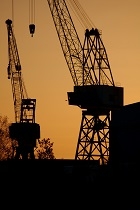
New Zealand's richest man has splashed out on a second luxury yacht - this one worth up to an estimated $78 million.
Graeme Hart, reportedly worth around $7 billion, was revealed as the owner of a new expedition super yacht launched in Norway at the weekend.
Norwegian boat builder, Kleven, which usually specialises in oil and fishing industry vessels, launched the 107-metre yacht on Saturday local time, revealing its billionaire owners who were there to watch as it ploughed into the water for the first time.
Mr Hart and wife Robyn were photographed at the shipyard in Ulsteinvik, 570km north of the capital Oslo.
"This is a very exciting project for us. We have been around in the yard and on board the vessel, and I'm very pleased with Kleven and the work that has been done here so far," Mr Hart told business newspaper Dagens Naeringsliv.
He had followed the construction process closely since the contract was awarded last year, he said.
Hundreds of locals turned up to watch the boat launch, the paper reported, taking photographs and videos as it was released.
Both Mr Hart and Kleven would not reveal to the newspaper how much the yacht was worth, but local estimates put it at between 300 million and 400 million Norwegian Krone (between $58 million and $78 million).
However, the monster-sized yacht, which has been named Ulysses, was not built to laze around celebrity ports, the paper said, with Kleven boasting it was built to be "very robust and seaworthy".
It was especially suited to longer expeditions in rough waters, while also being designed for a "luxury" experience. It comes equipped with a helicopter deck, hangar, swimming pool, hot tub, and accommodation for 60 people.
The boatbuilder was hoping this would help it launch into the luxury market.
"The project shows that we can also deliver in this unique market. These are exciting times," Stale Rasmussen, chief executive of Kleven said in a statement.
The ship was designed by Marin Teknikk, which has a long history of working with Kleven.
Ulysses will now undergo its luxury fit-out, with an expected completion date sometime in the spring of 2015.
The owner of the super yacht had been kept under wraps since Kleven announced the contract last year.
It revealed it had been hired to build an expedition support vessel for an international owner, and that the price was "a pretty spectacular sum".
The secret owner had wanted a Norwegian shipbuilder and construction at a Norwegian shipyard because of the "delivery time, quality and price", it said at the time.
Mr Hart shuns the media spotlight, but has grabbed headlines in the past for his luxury yachts.
He previously owned a 58-metre luxury motor yacht, also called Ulysses, which was moored at Auckland's Viaduct for years before being sold, renamed Grand Rusalina and relocated to Monaco.
His 77-metre superyacht Weta is currently in Whangarei reportedly undergoing a $50 million makeover, after sitting for more than a year near Silo Park in Auckland's Wynyard Quarter.
Ulysses luxury features:
* Helicopter hanger
* Swimming pool
* Sleeps 60 people
* 107 metres long

David Hart Dyke began his naval career as Midshipman (RNVR) in 1959. He then went to Britannia Royal Naval College Dartmouth as a regular officer before serving as Commander of the Royal Yacht Britannia, Captain of HMS Coventry in the Falklands conflict, and Chief of Staff to the Commander British Naval Staff in Washington, DC. After he retired in 2003, he transcribed the voice-recordings that he had made on his return from the Falklands over 20 years earlier. These recordings, along with the reminiscences of his ship's company, became the gripping story of Four Weeks in May .
Latest publication FOUR WEEKS IN MAY - Atlantic Books - April 2007
HMS Coventry's job during the Falklands War was to provide early warning of approaching enemy aircraft, and fend off any incoming threat to the highly valuable ships and aircraft behind her. On 25 May, Coventry was attacked by two Argentine Skyhawks and hit by three bombs. The explosions tore out most of her port side and killed 19 of the crew, leaving many others injured. Within twenty minutes she had capsized, and was to sink early the next day. In her final moments, when all those not killed by the explosions had been evacuated from the ship, her Captain, David Hart Dyke, himself badly burned, climbed down her starboard side and into a life-raft. This is his compelling and moving story.
Praise for FOUR WEEKS IN MAY
'A justifiably proud account of HMS Coventry 's war... A vital but measured story. It will appeal not only to those who were there but to a new generation of readers who will be riveted by this insight into the life on board a Royal Navy ship at war, as well as the sheer drama of Coventry 's story... Four Weeks in May is a page-turner, elegantly and tightly written... The tension between his determination to uphold morale, the upbeat letters home, private moments of honest reflection, the self-deprecating humour and what every reader knows will be the disastrous outcome of those four weeks, is compelling... Devastating... Dramatic images of bravery and presence of mind are brilliantly pieced together.' Alan West Naval Review
'Superbly frank and unsentimental... The literature of the Falklands War would be much the poorer without this pithy, well constructed and brutally honest account of the fighting at sea.' Saul David, Daily Telegraph
'Electric... Outstanding.' John Shirley, Guardian
'[An] honest, poignant and moving book.' Hugh McManners, The Times
'A down-to-earth, dramatic account of preparing for war and being plunged into the heart of it.' Glasgow Herald
'Lively, direct, human and engaging, this is one of the best personal memoirs of the bizarre and intense Falklands campaign.' Robert Fox, BBC History Magazine
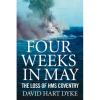
Inside the super yacht of New Zealand's richest man Graeme Hart
A video has been released showing the opulence on board Graeme Hart's super yacht, which is on the market for a cool $266 million.
Hart, New Zealand's richest man, is selling the 107m explorer yacht Ulysses just a few months after taking delivery of it.
READ MORE: Super sale on cards for New Zealand's richest man Graeme Hart
Ulysses boasts 15 cabins, a helipad and a jacuzzi. It is staffed by a crew of 42 and can accommodate up to 30 guests. It was available to hire for $400,000 a week.
A promotional video was released earlier this week showing off the luxurious lifestyle on board the yacht. It shows a helicopter landing on the vessel, restaurant dining, an on-board swimming pool, movie room and gym, and water sports including jet skiing and water jet pack riding.
Hart recently took delivery of another mega yacht, currently called no.370.
It was designed by Norwegian company Marin Teknikk in cooperation with naval architect Kyle Dick of New Zealand-based Oscar Mike Naval Architects.
The 116m expedition support vessel launched at the Kleven Verft shipyard in Norway three months ago.
It gives Hart two ships that are about the size of the Royal New Zealand Navy's two frigates, the HMNZS Te Mana and HMNZS Te Kaha, which are 118m.
Hart's new vessel, designed for long expeditions in rough waters, can accommodate 66 people and is reported to be equipped with a helicopter deck and hangar, plus space for five excursion boats.
Hart, who is new Zealand's wealthiest citizen with a net worth of $9 billion according to the National Business Review's rich list, has a third luxury vessel - the 77m Weta.
Latest from Business
Supreme court rejects beca appeal over demolished wellington bnz, matt heath is leaving radio hauraki, current account: new zealand’s spending deficit with the world widens by $269m, tackling nz’s food waste problem.

Beca failed in the High Court and the Court of Appeal so it went to the Supreme Court.

Synlait gets second lifeline: Bright Dairy takes control in ‘watershed’ vote

Persistent scammers use rapport to bait Kiwi businesses

IMAGES
VIDEO
COMMENTS
The Ulysses yacht, a 103-meter masterpiece built by renowned shipyard Feadship, exemplifies modern yacht design. This vessel, owned by New Zealand billionaire Graeme Hart, is a beacon of nautical innovation. Key Takeaways: Ulysses, a 103-meter superyacht, is a testament to Feadship's excellence in yacht design and construction.
The yacht Ulysses is a 116-meter expedition yacht built at Kleven. The yacht was ordered by Graeme Hart. Hart ordered two expedition yachts at Kleven. He sold the 'smaller' (107 meters) to (reportedly) Yuri Milner. She is now named Andromeda. In 2019 Hart purchased the CRN yacht Cloud 9 and named her Odyssey II.
Inside $250million Ulysses yachtThe Ulysses yacht is an incredible superyacht owned by Graeme Hart. The owner commissioned the extraordinary superyacht with ...
Captain David Hart Dyke CBE, LVO, ADC ... From 1976 he served on the staff of the Royal Naval Staff College, then from 1978 as the commander of the Royal Yacht Britannia. [7] [8] He was made a Member of the Royal Victorian Order (4th class) (MVO) on 1 January 1980. [9] HMS Coventry in 1981.
Abeona trails behind the world's largest sailing yacht, owned by centibillionaire Jeff Bezos, the $500 million Koru. Via Youtube / @Zwijnenburg Hart's 2,992 GT ship also outdoes Zuckerberg's Wingman yacht, which spans 220 feet with a volume of 1,143 GT. U-81 accommodates 8 guests in 4 suites and is serviced by 26 crew members.
Washington is the man behind The Washington Companies and the superyacht, and he has a net worth of approximately $6.2 billion in 2022 according to Forbes. Along with The Washington Companies, he also founded Montana Rail Link and Aviation Partners. He also owns Seaspan which is based in North Vancouver, a company that provides marine services ...
Hart's luxury yacht Ulysses comes complete with a helicopter. Photo/Antonio Marano. The superyacht owned by New Zealand's richest man is currently taking its maiden voyage through the Mediterranean.
Captain David Hart Dyke commanded the destroyer HMS Coventry in the Falklands campaign, surviving the Argentinian air attack that would sink his ship. Captain David Hart Dyke CBE, LVO, ADC is married to Diana Hart Dyke and was Captain of HMS Coventry during the Falkland's Conflict. On the 25 May 1982 the ship was sunk in the South Atlantic ...
Graeme Hart Yachts. He is reportedly still the owner of the yacht Ulysses, although some of our sources claim he sold her to Yuri Milner. He also sold his previous yacht (now named Andromeda). to Milner. We can link the following yachts to Hart: the Amels Here Comes The Sun, the U81 support vessel, the CRN yacht Odyssey, and he is building a ...
New Zealand's richest man has splashed out on a second luxury yacht - this one worth up to an estimated $78 million. Graeme Hart, reportedly worth around $7 billion, was revealed as the owner of a new expedition super yacht launched in Norway at the weekend. Norwegian boat builder, Kleven, which usually specialises in oil and fishing industry ...
#superyacht #superyachts #yachts #boatsShort formatThis is a single story of the full SuperYacht news video for people who perhaps don't have the time to wat...
Spotted Ulysses 116 meters Explorer Superyacht at çap-Ferrat Cote D'azur french Rivièra , the current position of ULYSSES Is at West Médirerranean. ULYSSES...
Download CV. David Hart Dyke began his naval career as Midshipman (RNVR) in 1959. He then went to Britannia Royal Naval College Dartmouth as a regular officer before serving as Commander of the Royal Yacht Britannia, Captain of HMS Coventry in the Falklands conflict, and Chief of Staff to the Commander British Naval Staff in Washington, DC.
That is the same name one of Hart's previous superyachts had, a 107m Norwegian-built explorer yacht the billionaire sold in 2017. "With an exterior design by Sinot Yacht Architecture & Design ...
A massive superyacht belonging to a US billionaire has docked at a North Vancouver shipyards for repairs during the COVID-19 pandemic, a trip the ship's owners say was "essential.". The 100-metre long Attessa IV arrived in Canada from Port Angeles, Washington on June 30 after receiving clearance from the Canada Border Services Agency ...
Graeme and wife Robyn Hart in Amsterdam with the new boat. Photo / Instagram. New Zealand's richest man has been linked to a new 103-metre "megayacht" in Amsterdam featuring enough space for ...
The Joint Institute for Nuclear Research was established on the basis of an agreement signed on 26 March 1956, in Moscow by representatives of the governments of the eleven founding countries, with a view to combining their scientific and material potential. The USSR contributed 50 percent, the People's Republic of China 20 percent.
Dubna (Russian: Дубна́, IPA:) is a town in Moscow Oblast, Russia.It has a status of naukograd (i.e. town of science), being home to the Joint Institute for Nuclear Research, an international nuclear physics research center and one of the largest scientific foundations in the country. It is also home to MKB Raduga, a defense aerospace company specializing in design and production of ...
One of the most expensive boats in New Zealand is getting a $50 million makeover. Super-yacht Weta, the pride and joy of billionaire Graeme Hart, is in Whangarei, where local firm Culham ...
A video has been released showing the opulence on board Graeme Hart's super yacht, which is on the market for a cool $266 million. Hart, New Zealand's richest man, is selling the 107m explorer ...
Dubna (Russian: Дубна) is the name of several inhabited localities in Russia.. Urban localities. Dubna, a town in Moscow Oblast; Dubna, Dubensky District, Tula Oblast, a work settlement in Dubensky District of Tula Oblast; Rural localities. Dubna, Kaluga Oblast, a village in Ulyanovsky District of Kaluga Oblast; Dubna, Chekhovsky District, Moscow Oblast, a selo in Stremilovskoye Rural ...
Dubna. Dubna is a green and pleasant city which has become a "Science City", due to the location of the Joint Institute for Nuclear Research here. It is situated at the beginning of the Moscow Canal, which is watched over by a gigantic Lenin statue - the second biggest in the world. The city can easily be visited on a day trip from Moscow.